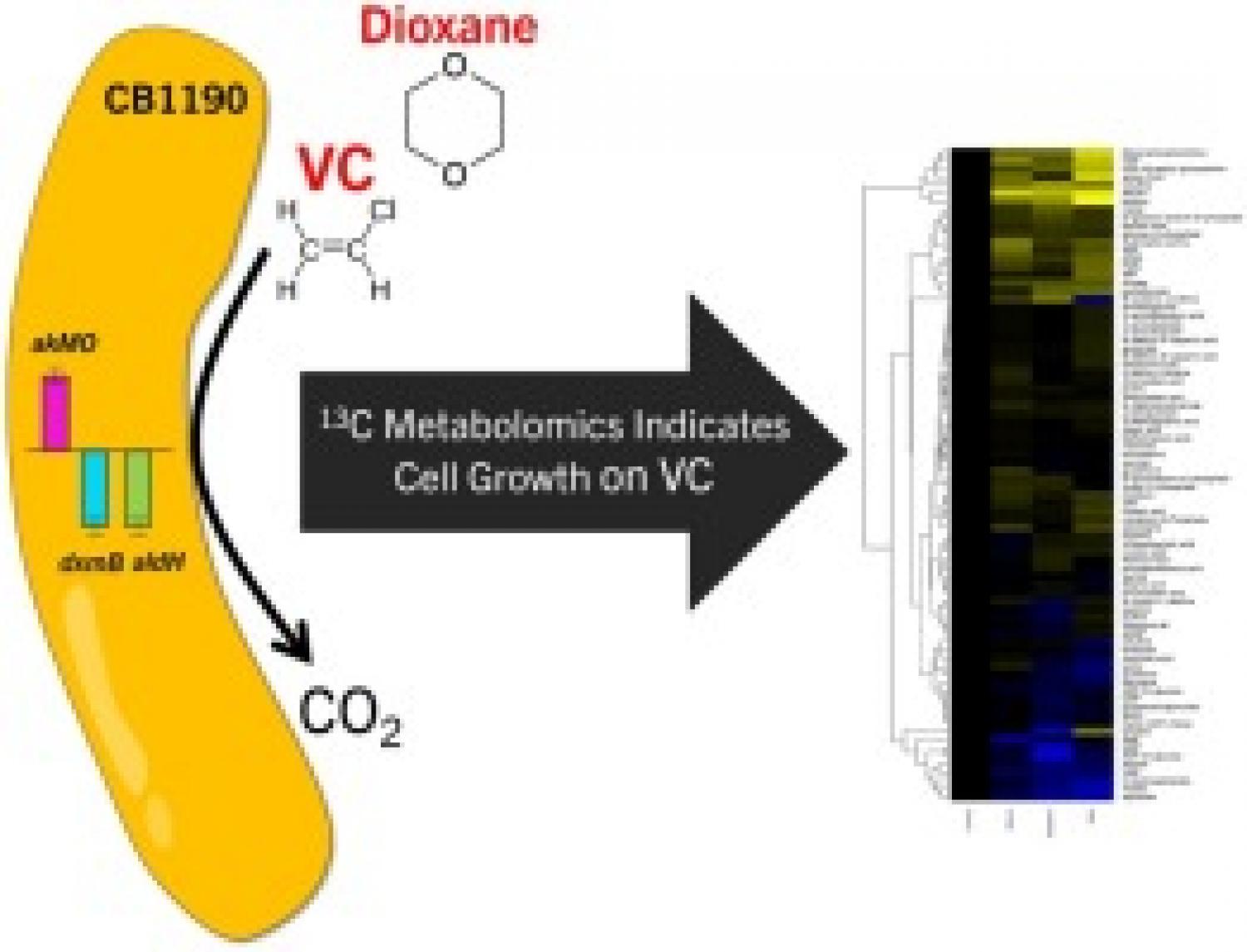
Elsevier, Journal of Hazardous Materials Letters, Volume 2, November 2021
Vinyl chloride (VC) and 1,4-dioxane (DX) are carcinogens and co-occurring groundwater pollutants. Co-contaminants often affect the ability of microorganisms to biodegrade individual constituents. One of the mechanisms by which microbial cells overcome toxic inhibition is by transforming the inhibitory compounds. In this study, while VC inhibited DX biodegradation, it was surprisingly utilized as a growth substrate by Pseudonocardia dioxanivorans CB1190. Increasing concentrations of VC decreased DX biodegradation rates, whereas increasing DX did not have a strong effect on VC biodegradation. CB1190 was able to biodegrade both compounds simultaneously. The dxmB and aldH gene targets were down regulated during VC biodegradation and were likely not induced by VC. After incubating CB1190 with 13C-labeled VC, the detection of isotopic labeled metabolites engaged in lipid and protein synthesis (e.g., aspartate, alpha-ketoglutarate, acetyl-CoA) and energy production (e.g., ATP) provided direct evidence of CB1190’s ability to use VC as a source of carbon and energy. Collectively, these results confirm that CB1190 utilizes VC, a strong DX degradation inhibitor, as a growth substrate. This ability to aerobically degrade VC as well as DX would make CB1190 an attractive bioaugmentation culture at sites where enhanced reductive dechlorination stalls at VC due to oxygen intrusion or strain-specific limitations.
